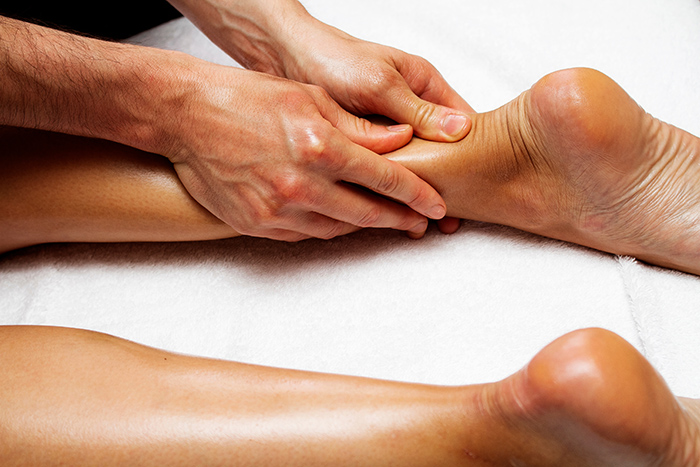Equine Performance Specialists
Bodywork that honors and respects the horse’s and rider’s structure and spirit
Your horse deserves the best care, performance enhancement and recovery from sports injuries available. Equine Structural Integration systematically works on your horse’s connective tissues layer by layer to release holdings, realign tissue and skeletal structure and fully integrate your horse’s body for greatly enhanced performance and fluidity and grace of movement. Circulation is greatly improved which enhances and speeds up the healing process. Routine sessions help maintain your horse in peak performance and increases their longevity to compete in your chosen discipline.
Even if an injury or fascial restriction is in a specific location, the entire body is affected because of the interconnects of the fascia. By working on the entire body you are going to relieve existing compensations and catch others before they have a chance to take a hold. The work is not only rehabilitative and progressive, it’s also preventative.
We have 20 years’ experience performing Equine Structural Integration on various breed of horses in all disciplines. Let us become part of your horses winning team.
What’s in an equestrian session?
Movement Analysis
Hands-on Bodyscan
What moves freely, holds tensions, is tender?
Where is horse cautious about being touched?
Create a Bodymap
Devise the best sequential plan to unravel compromised muscular and imbalanced myofascial relationships
Hands-on Bodywork
Release adhesions, rebalance skeletal structure
All work done with sensitivity and at a depth and speed your horse readily accepts



• Fluidity and Grace
• Speed
• Precision
• Power and Efficiency
• Healing sports injuries
• Enhanced soundness and longevity for competition

For the Humans Involved
Equine Performance Specialists is excited to offer a unique opportunity for both horses and riders.
We will work on both you and your horse to fully integrate both partners. Your balance and overall performance will improve, as will your horse’s.
With improved balance, released restrictions and greater freedom of movement, not only will you enjoy riding more, but you will also be more in sync with your horse.
You won’t run the risk of throwing your horse out of adjustment after they have had either a session or a full series done, because you also will be structurally integrated.
Health Benefits
“The medical benefits are specific, observable and measurable beyond a mere type of physical therapy. Rather than just a band-aid, it really is a restructuring and recreating of soft tissues in relationship to the whole structure and function.”
Dr. William Harrel, MD

Meet Tim Westfall
Tim Westfall is a life long horseman who is deeply interested in all aspects of horses and horsemanship. His guiding philosophy is “For the good of the horse.” Tim is a graduate of Equine Natural Movement School where he learned his technique of Equine Structural Integration, which he has been practicing for 11 years. He has been an active trainer and competitor in cutting, reined cowhorse and reining for nearly 35 years. He also studied classical riding under Nuno Oliveria and Jean Claude Racinet. He has studied horsemanship under many of the top western performance trainers. Being a consummate horseman, he continues to do so. Tim believes that true horsemanship is a never-ending journey and that it never possible to delve deep enough. The most influential horsemen in Tim’s life have been his mentors Tom Dorrance and Ray Hunt. Tim is dedicated to carrying on their philosophies of horsemanship and incorporating it into his work with horses.Tim’s love and dedication to horses is evident in every aspect of his work.
Meet Veronica Cuevas
Veronica was born and raised in San Diego, CA to a non horse family and yet her love for horses began since she was a little girl. Her father bought her first horse at age 12 in Rosarito, Mexico.
It wasn’t until after college that Veronica was able to pursue her journey for true horsemanship and she began her quest for knowledge and understanding.
In 2017 Veronica received her Level 1 “Equine Musculoskeletal Unwinding” through Holistic Horse Works. The course focuses on osteopathic and myofascial muscular and skeletal releases including releasing trapped emotions, releasing defense posture, acupressure energy work, and applied kinesiology.




Freedom of movement emerges as the different layers begin to glide effortlessly over one another, bringing more potential energy and power to the muscles and
rhythmic grace and smoothness to the horse’s gaits. Your horse moves, feels, looks and is more sound.
Equine structural integration series
First Session
Purpose — Build trust. Get to know the horse’s tension patterns.
Method — Release holding in surface musculature. Identify deep holding patterns that are the roadmap for a continuing series.
Second Session
Purpose — Give the horse a better sense of stability so he’s more secure in moving on and off the ground. Bring out the power available in the horse’s hind end.
Method — Emphasize vertical line integrity in standing. Free up tendons and musculature of all four legs. Free up superficial and midlevel fascial restrictions in shoulders, pelvis, lumbar and hip joints.
Third Session
Purpose — Integrate muscle groups that share movement functions.
Method — Begin to shift vertical line integration into horizontal plane. Work focuses on functional quadrants rather than individual muscles.
Fourth Session
Purpose — Bring out fluidity of whole-body motion.
Method — Connect front and hind ends through the barrel. Emphasize horizontal line cohesiveness.
Fifth Session
Purpose — Reinforce changes after horse has practiced his discipline.
Method — Maintain flexibility of fascia while horse strengthens into an integrated movement pattern.